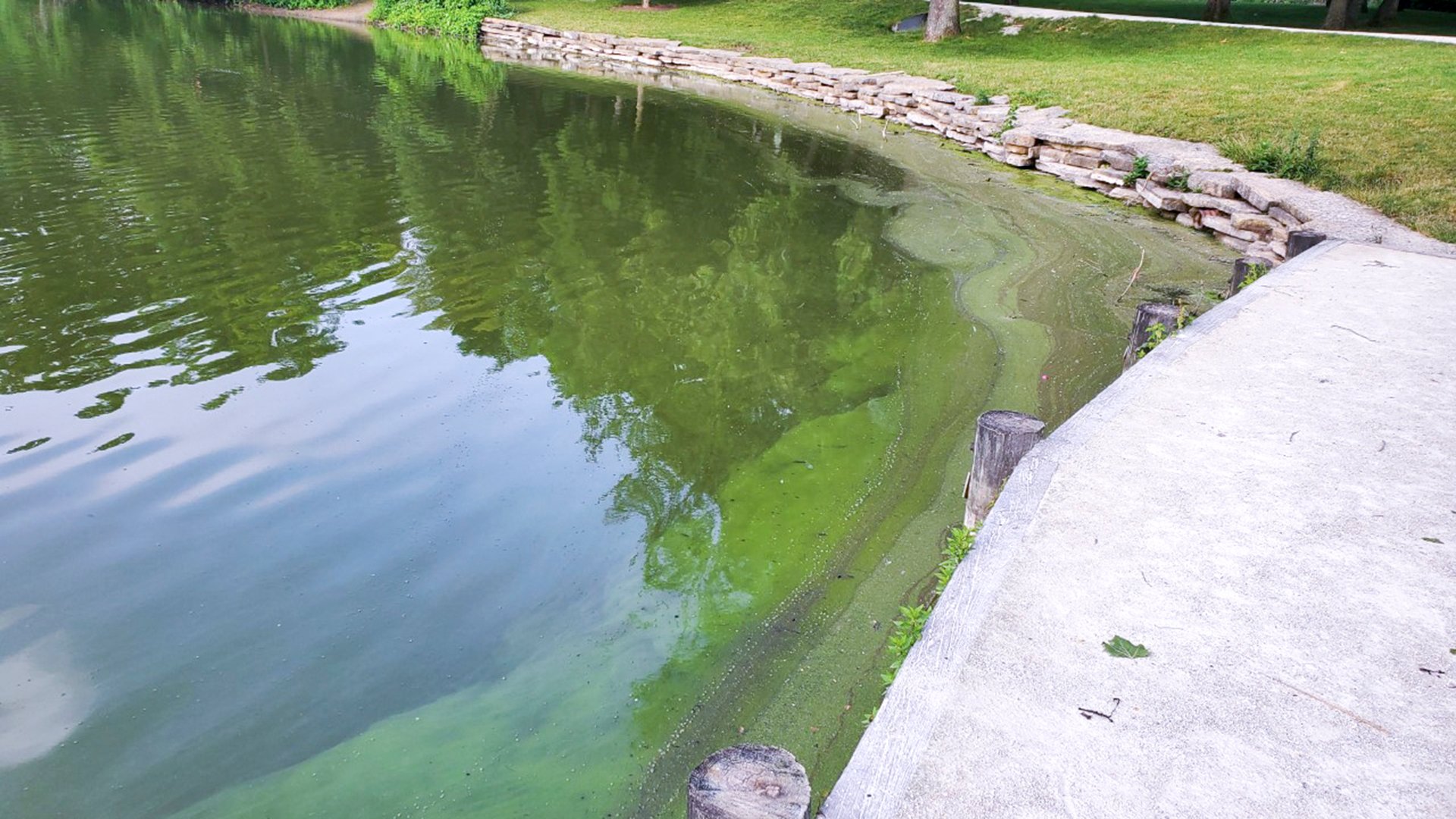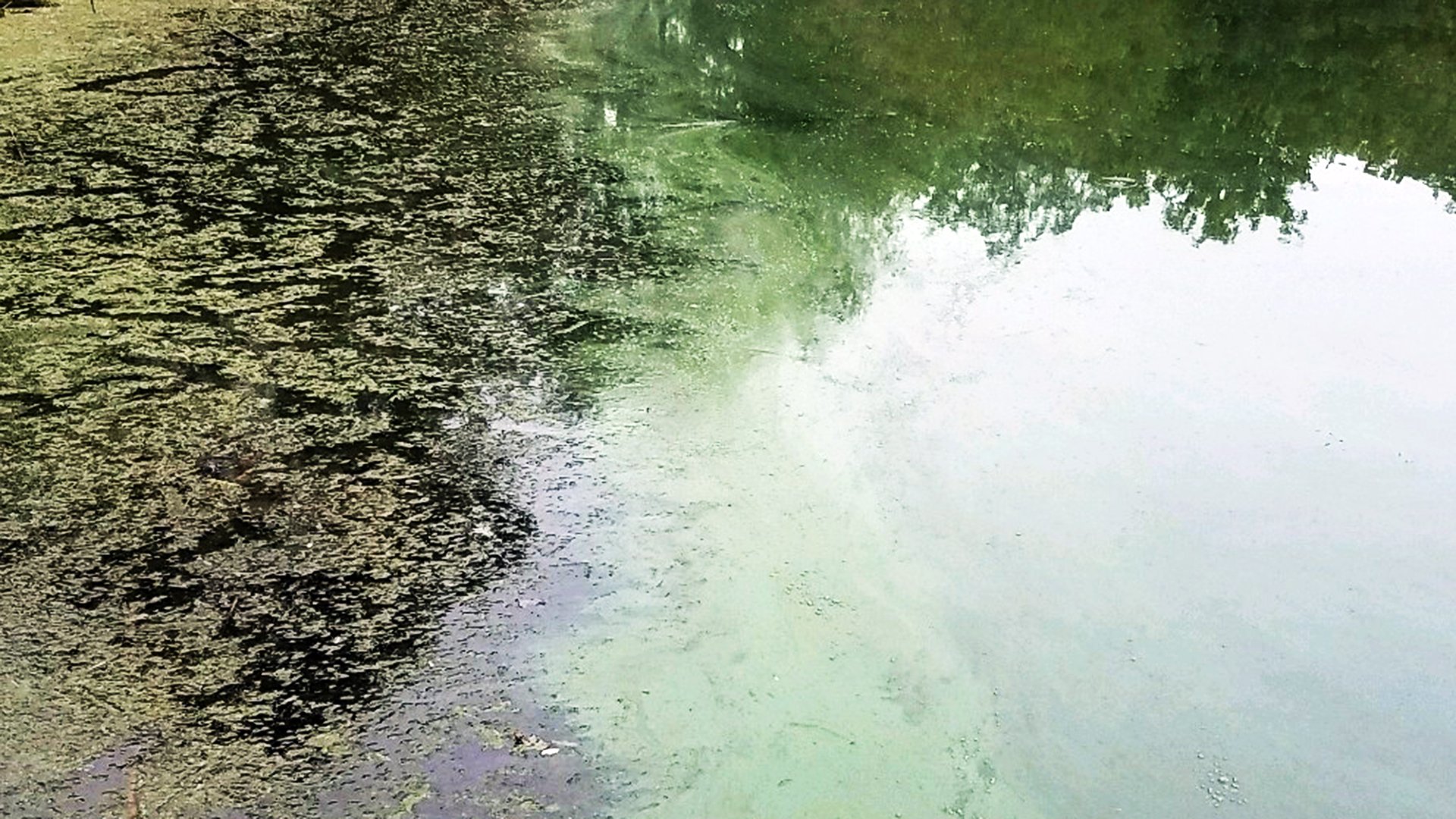
Harmful Algal Blooms
Blue-Green Algae
Blue-green algae, or “cyanobacteria,” are a natural part of the aquatic environment. They’re often found in small or moderate amounts in Illinois lakes. But they can grow and reproduce quickly in warm, fresh water if nutrients such as nitrogen and phosphorous (both common in fertilizers) make their way into the water and if sunny, still conditions follow. This rapid growth is referred to as a bloom, and blooms can become harmful when the algae produce toxins, such as microcystins.
Harmful blue-green algal blooms are a common natural phenomenon that can form in any body of water. In Illinois, harmful blooms typically occur between June and September and can look like thick layers of blue, green, or brown scum or paint on the surface of the water. They may also smell, especially in warmer weather.
Harmful blue-green algal blooms can last for extended periods of time depending on a variety of conditions, including light penetration, water temperature and flow, changes in pH, and the presence of nitrogen, phosphorus, and trace metals.
Ingesting, touching, and inhaling water with harmful blue-green algae can make pets, children, and people with weak immune systems sick. Cyanobacteria and their toxins can cause skin irritation, headache, neurological symptoms, vomiting, diarrhea, difficulty breathing, and other medical conditions.
Protect Yourself and Your Pets
If a harmful blue-green algal bloom is underway, follow these simple safety precautions:
- Don’t come in contact with the water or touch the algae.
- Keep your pets away from the water, too.
- Thoroughly wash skin or fur that comes in contact with the water as soon as possible.
- For more information, visit dph.illinois.gov.

FAQs About Blue-Green Algal Blooms
It depends on the concentration of toxins and the duration of the bloom. Canines (pet dogs included) are particularly susceptible. Drinking the water can cause seizures, organ failure, and death.
Other wildlife can be affected, but it’s less common. Wildlife has evolved with and been exposed to harmful algal blooms for centuries, so many have developed ways to avoid the potentially dangerous effects.
When a harmful blue-green algal bloom is suspected, the Forest Preserve District tests for microcystins in the water. If levels exceed 5 parts per billion, it informs the public and the Illinois Environmental Protection Agency. It then regularly tests the water body to determine when the bloom has dissipated.
Some measures can help lower the risk of harmful blooms, but once a bloom forms there is little to do but let it run its course. Microcystins are released as algae die, so treating with herbicides can actually increase the level of toxins.
Research suggests it should be safe. Microcystins primarily affect the digestive tracts and livers of animals, so a fish’s muscle tissue (the part people eat) should have low levels. However, handling fish during an active bloom increases the risk of skin exposure and should be limited or avoided.
Boating is typically safe, but always use your best judgment if active blooms are present. Avoid contact with discolored, scummy water, and wash you skin with soap and water or rinse thoroughly with clean water if you do come in contact with the water.
The safest thing is to treat every algae bloom as dangerous. Keep pets out of the water, and do not come in contact with it yourself. If you do, wash thoroughly as soon as possible.